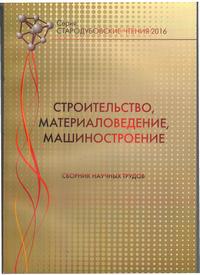About the causes of the accidents in deep foundation pits
Keywords:
accidents, deep foundation pits, geotechnical monitoring.Abstract
Purpose. Scientific research of the causes of the numerous accidents in the calculation and construction of the deep foundation pits in the conditions of the compact urban development. Methodology. The accidents in the foundation pits more than 15 meters depth were selected as a material for the analysis. Findings. Aftercarrying out the analysis of the various errors that leads to the accidents, the main causes and consequences of these accidents have been investigated. Three main groups of causes of accidents were classified as: errors in carrying out of the geological, errors in the calculation and designing, and errors in the construction and the irregular running. Also the subgroups of errors have been identified with the examples of the accidents have happened in the world. Practicalvalue. The article presents the results of the complex analysis of the accidents in deep foundation pits and their consequences. The main causes of the destruction of foundation pits were classified, which allows increasing the level of the understanding on the issue of the accidents in deep foundation pits and avoiding making similar mistakes in the future.
References
Geotehnicheskoe soprovozhdenie vysotnogo stroitelstva [Geotechnical trecking of the high-rise buildings]. // Nauchnoissledovateskiy tsentr «Geodinamika» MIIGAiK. — Available at: http://www.geodinamika.ru/geotehnicheskoesoprovozhdenie
Zehniev F.F. Preimuschestva primeneniya metodov nablyudeniya za deformatsiyami ograzhdeniya kotlovana [Advantages of the application of methods to monitor the deformations of the in foundation pits] / F.F. Zehniev, D.A. Vnukov, A.S. Petuhov // Vzaimodeistvie osnovaniy i sooruzheniy. Podzemnyie sooruzhenia i podpornyie stenyi —Saint-Petersburg, 2014. — pp. 111-119. (In Russian)
Kolybin I.V. Podzemnie sooruzhenia i kotlovany v gorodskikh usloviakh – opyt poslednego desiatiletia [Underground Structures and Foundation Pits in the Urban Conditions – Experience of the Last Decade]. — М.: Rosiyskaia geotekhneka -tshag v ХХI vek. Trudy konferentsii, posviatshenykh 50-letiyu ROMGGiF, 2007. — pp. 1-35. (In Russian)
Ponamarev A.B. Podzemnoe stroitelstvo: uchebnoe posobie [Underground construction: study guide] / A.B. Ponamarev, Y.L. Vinnikov // Perm: izd-vo Perm. nats. issled. politeh. un-ta, 2014. — 262 p. (In Russian)
Sedin V.L. Vnedrenie kombinirovannogo plitno-svainogo fundamenta na primere stroitelstva podzemnogo parking v Odesse [Combined pile-part foundations implementation: underground parking development in Odessа as an example] / V.L. Sedin, E.M. Bikus, A.O. Diuldev, A.M. Melnik // Zb. nauk. prats. Seria: Galuzeve mashinobuduvannia, budivnytstvo / Polt. nats. tehn. un-t im. Y. Kondratuka. — Poltava, 2013. — № 3. — p. 321-328. (In Russian)
Ulitskiy V.M. Gid po geotehnike [Guide to the geotechnical engineering]. / V.M. Ulitskiy, A.G. Shashkin, K.G. Shashkin // PI «Georekonstruktsyia». — Sankt-Peterbourg, 2012. — 288 p. (In Russian)
Yugov A.M. Analiz avariinykh situatsiy pri vozvedenii podzemnykh tchastey zdaniu [Analysis of the Accidents during the Arrangements of the Underground Parts of the Building] / A.M. Yugov, N.S. Novikov // Tehnologiya, organizatsiya, mehanizatsiya i geodezicheskoe obespechenie stroitelstva. «Visnuk» DNASA, 2014. — № 6. — pp. 27-33. (In Russian)
Artola J. A solution the braced excavation collapse in Singapore. — Massachusetts, 2005. — Available at:http://hdl.handle.net/1721.1/31123
Brandl H. Destruction of deep foundation pit in the urban area // Vienna, 2007.
Chang-Yu Ou. Deep excavations. Theory and practice. — London: Taylor & Francis, 2006. — 551 p.
Conçalves H. Discussing city of Santos’ building foundations. «What to do about 100 tilted tall buildings?» / Proc. Internat. Geotech. Conference «Soil-Structure Interaction: Calculation Methods and Engineering Practice». — 2009. — vol. 1. — pp. 165-174.
El-Mossallamy Y., Wahby A., Eltahawy W. Deep pit excavation in special geotechnical conditions // 18 th international conference on soil mechanics and geotechnical engineering. — Paris, 2013. — pp. 126-134.
Kunstche K. Construction of deep foundation pits / Proceedings of the 32nd Annual Conference on Deep Foundations. — Colorado Springs, USA, 2007. — pp. 298-310.
Стаття рекомендована до публікації д-ром техн. наук, проф. Є. А. Єгоровим; д-ром техн. наук, проф. С. А. Щербаком.
Downloads
Published
Issue
Section
License
Редакція Видання категорично засуджує прояви плагіату в статтях та вживає всіх можливих заходів для його недопущення. Плагіат розглядається як форма порушення авторських прав і наукової етики.
При виявлені у статті більш ніж 25% запозиченого тексту без відповідних посилань та використання лапок, стаття кваліфікується як така, що містить плагіат. У цьому випадку стаття більше не розглядається редакцією, а автор отримує перше попередження.
Автори, в статтях яких повторно виявлено плагіат, не зможуть публікуватися в усіх журналах Видавництва ДВНЗ «Придніпровська державна академія будівництва та архітектури».
Автори, які публікуються у цьому журналі, погоджуються з наступними умовами:
- Автори залишають за собою право на авторство своєї роботи та передають журналу право першої публікації цієї роботи на умовах ліцензії Creative Commons Attribution License, котра дозволяє іншим особам вільно розповсюджувати опубліковану роботу з обов'язковим посиланням на авторів оригінальної роботи та першу публікацію роботи у цьому журналі.
- Автори мають право укладати самостійні додаткові угоди щодо неексклюзивного розповсюдження роботи у тому вигляді, в якому вона була опублікована цим журналом (наприклад, розміщувати роботу в електронному сховищі установи або публікувати у складі монографії), за умови збереження посилання на першу публікацію роботи у цьому журналі.
- Політика журналу дозволяє і заохочує розміщення авторами в мережі Інтернет (наприклад, у сховищах установ або на особистих веб-сайтах) рукопису роботи, як до подання цього рукопису до редакції, так і під час його редакційного опрацювання, оскільки це сприяє виникненню продуктивної наукової дискусії та позитивно позначається на оперативності та динаміці цитування опублікованої роботи (див. The Effect of Open Access).

